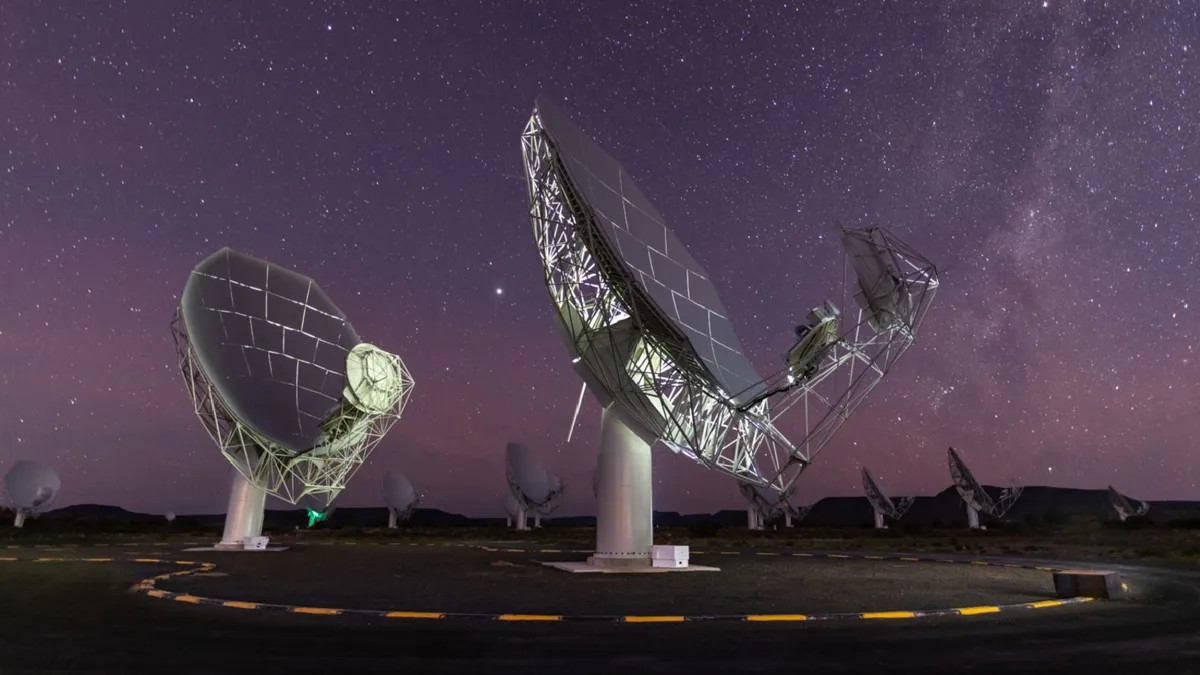
Astronomers have made a groundbreaking discovery by detecting the first-ever radio signal coming from the interstellar comet 3I/ATLAS, precisely as it passed the halfway mark on its one-way journey through the solar system. While this discovery might initially be interpreted as evidence supporting the notion of the comet's alien origins, the reality is quite the opposite.
3I/ATLAS is the third-known interstellar object (ISO) to traverse our cosmic neighborhood. It was first observed in early July, hurtling towards the sun at an astonishing speed of over 130,000 mph (210,000 km/h). Subsequent findings revealed that astronomers had been tracking the comet since May. Most experts align on the classification of 3I/ATLAS as a comet, potentially the oldest of its type ever documented, expelled from an alien star system in the far reaches of the Milky Way approximately 7 billion years ago.
Despite the general consensus among researchers, a minority of scientists, led by Harvard University astrophysicist and noted alien hunter Avi Loeb, have been advocating a speculative theory suggesting that 3I/ATLAS might actually be an alien spacecraft in disguise. This theory has sparked a number of misleading narratives, diverting attention from the genuine scientific explorations regarding this interstellar object. A similar scenario unfolded with the first-ever ISO, 'Oumuamua, which Loeb and others also posited as a potential alien mothership.
Recently, astronomers at South Africa's MeerKAT radio telescope announced the detection of radio emissions from 3I/ATLAS. This announcement likely fueled expectations among proponents of Loeb's theory for evidence of a clandestine alien transmission, especially as it coincided with the comet's closest approach to the sun, known as perihelion, which occurred on October 29. However, the signals detected were not of technological origin; instead, they resulted from specific wavelength absorption related to the presence of hydroxyl radicals, or OH molecules, in the comet's coma.
These hydroxyl radicals are generated by the breakdown of water molecules expelled from the comet through a natural process called outgassing, indicating clear cometary activity, as supported by a 2016 study. This is not the first indication of water emanating from 3I/ATLAS; in early October, NASA researchers observed water gushing from the comet like a fire hose. The latest findings further reveal that this water is being broken down by solar radiation, a typical occurrence during perihelion.
Avi Loeb acknowledged the detection of hydroxyl radicals in the latest update about 3I/ATLAS on his personal blog, which boasts over 100,000 subscribers. However, he refrained from commenting on whether this finding signifies classic cometary activity.
The new radio signals were initially detected on October 24, shortly after 3I/ATLAS briefly obscured itself behind the sun during perihelion. This solar flyby was also marked by an unexpected brightening event and a temporary color change. After reemerging earlier this month, the comet appeared to have lost its tail, although this was later proven to be untrue. Throughout its journey, the comet has exhibited several unusual characteristics, such as a highly irradiated surface, an excessive amount of carbon dioxide, and a perplexing anti-tail. However, the astronomical community has provided explanations for these traits, with an overwhelming majority convinced that 3I/ATLAS is a natural object.
In a related development, astronomers recently identified another object, dubbed C/2025 V1 (Borisov), which reached its closest point to Earth on November 11. Rumors circulated suggesting that this object might be a probe deployed by 3I/ATLAS during perihelion. However, these claims were quickly dismissed, with even Loeb admitting the likelihood of this theory was minimal. Instead, C/2025 V1 (Borisov) has been confirmed as a typical solar system comet.